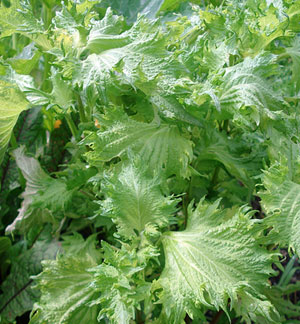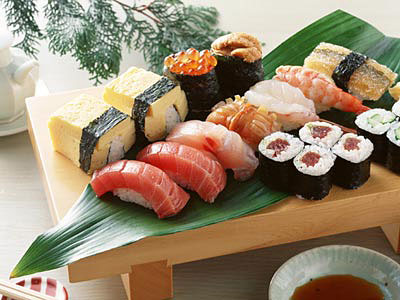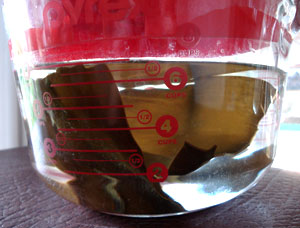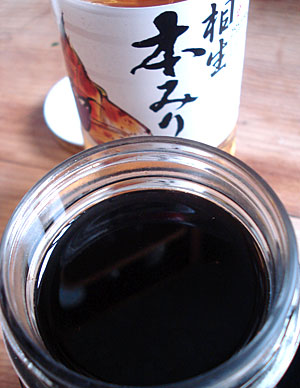Following up on my previous post, here are some more recipes that use wiener sausages on Cookpad:
Filed under:
japanese offbeat
I often like to peruse the excellent Japanese cooking site Cookpad. Cookpad is a unique cooking community site. The bulk of it consists of cooking blogs, where people post recipes and pictures. People can post short responses to the recipes called tsukurepo, where they show a photo of their attempt making the recipe. A lot of recipes also note which other recipe on the site inspired the poster to come up with theirs.
Filed under:
japanese offbeat
In the last few years, there seems to have been a resurgence in the interest in macrobiotics in Japan. At least it does seem so judging from the magazine articles and cookbooks devoted to the subject.
If you're unfamiliar with macrobiotics, it's a form of almost-veganism (macrobiotics does allow for some fish) with quite idiosyncratic theories. It originated in Japan, was exported to the West, and gained popularity in some circles, especially the ones devoted to alternative lifestyles (like hippies and such). There's a tendency in Japan to get overly impressed by anything (or anyone) in Japanese culture that gets popular in other countries, which I think accounts for at least part of the renewed popularity of macrobiotics - or makurobi as it's abbreviated to - there. The macrobiotic diet has a lot of similarities to the traditional, or pre-WWII, diet, but isn't quite the same. It's also not the same as sho-jin cooking - elegant vegan cuisine that was originated by Zen Buddhist monks.
I've been generally trying to increase my repertoire of vegetable and grain based dishes this year (though I'm not a vegetarian), so I've done quite a lot of research into makurobi these past few months. There are plenty of very appetizing looking cookbooks coming out regularly, and I've collected quite a stack of them.
Yet it's quite unlikely that I'll be turning into a full-fledged macrobiotic convert any time soon. The main reason is that I can't fully buy into one of the central philosophies of the religion - I mean, theory - that of yin and yang foods. Basically the theory is that all foods have yin (dark or cold) and yang (light or warm) energies, and we are better off eating close to the center of the yin and yang scale. Foods that are at the center are generally things like whole grains, beans and other pulses, root vegetables (but not potatoes), and so on. Since macrobiotics did originate in Japan, brown rice is the king of grains.
Filed under:
essays japanese nutrition

Around here it's already cool enough to declare that summer is over and fall is here. (Actually we had a very cold, wet summer anyway, but nevertheless.) So the summer vegetable plants in my garden are dying off, and I'm in the process of salvaging the remaining tomatoes and eggplants, picking the last zucchini, and eyeing the winter squash to see when they will be ready.
Tender herbs like basil are on their last legs, so I'm picking and preserving those flavors of summer so that they can brighten the dark winter months. Last year I took the lazy option and froze everything, packing the picked leaves in plastic bags and throwing them in our big locker-type freezer. Freezing is okay if you're too busy to do anything else with your herbs, but not really the optimal way all the time to keep tender herbs in the long run. So this year I'm thinking things through a bit more and considering how I want to use each herb, and preserving them accordingly. Each method is quite easy and really doesn't take that much time.
Filed under:
japanese preserves and pickles vegetarian herbs
I was recently sent a book about Japanese cooking for review. I wasn't too impressed by the book for a variety of reasons, but one thing that really bothered me was that it used dashi stock powder for practically every recipe. (What made it worse is that the book's title proclaimed the recipes therein to be "Healthy".)
Dashi stock powder is akin to soup stock cubes in Western cooking. Like soup stock cubes, they are a very convenient way to add a concentrated dose of umami to a dish. I do have a box of the stuff in my kitchen which I use on occasion.
But keep in mind that dashi stock powder contains quite a lot of MSG. The good or bad of MSG may be a debatable subject, but when it comes to food additives I always like to be on the cautious side. Besides, with the right ingredients making dashi stock from real ingredients, even a vegan version, doesn't take that much time - and tastes a whole lot better too. This is different from the time and effort, not to mention the mess, needed to make a good chicken stock, for example. On my list of Japanese pantry essentials, I have put MSG or Ajinomoto as something that's optional, and I regard dashi powder in the same light.
In Japan, more and more households are turning away from dashi stock powder for health reasons, especially in families with small children. I don't see any reason for people new to Japanese cooking to start out on the wrong leg by relying on an iffy convenience product.
Filed under:
japanese ingredients
Periodically I get emails and comments asking me to post a recipe for one thing or another, usually something Japanese. I try to do so (eventually) with most things, though it may take a while between request and actual writeup since I try to make sure that if I do write it up, it will actually work. One of the things I've been asked about a lot is ramen, probably because it's so ubiquitous in Japan, and so tasty. Since it's usually served as a sort of fast food, and because the instant and cup-noodle varieties are well, so instant, people may assume that it's not hard to make.
Filed under:
japanese noodles
There were not one but two Op-Ed articles in the New York Times yesterday about sushi. Two! It always amazes me how fast sushi has become mainstream in the U.S. in particular and 'the West' in general, but I guess this is some sort of proof.
Filed under:
essays japanese sushi

While I've posted recipes for several different kinds of sushi on this site, I have never published a recipe for making nigiri zushi, the kind of sushi most people think of is the sushi, in spite of several requests to do so. There are a couple reasons for this, which you may want to consider before embarking on your own nigiri sushi making experiments. One reason, as I've written about before, is that it's quite difficult to get the nigiri part (the forming of the rice ball and placing of the neta or topping) right. Of course you can practice this, or use a sushi former, or even - if you get fanatical about it - a sushi robot. But the more serious reason is that raw fish is something to be very, very wary of at all times.
Filed under:
japanese sushi

As I've stated many times here over the years, the basis of most Japanese savory foods is a good dashi, or stock. Dashi is not just used for soups, it's used for stewing, in sauces, batters, and many, many other things.
The regular way to make dashi was one of my first entries on Just Hungry. It uses kombu seaweed and dried bonito flakes (katsuobushi). Some people use niboshi, small dried fish, in addition to or instead of bonito flakes.
Katsuobushi and niboshi are both fish-based, so not vegetarian. So how do you make a good vegetarian, even vegan, dashi?
Filed under:
basics japanese soup vegetarian vegan
Submitted by maki on 14 May, 2007 - 17:18

When the weather gets warmer, we eat a lot of cold Japanese noodles: soba (buckwheat noodles), hiyamugi (thin wheat noodles), so-men (even thinner wheat noodles), Sanuki udon (thick wheat noodles- Sanuki is the name of a region famous for udon) and harusame (bean or 'glass' noodles). For most cold noodle dishes a salty sweet soy sauce based soup or dipping sauce called mentsuyu is used. You can buy pre-made mentsuyu concentrate, but to me most of them taste too sweet or are overwhelmed by a too-strong MSG or similar artificial tasting umami flavor. Making mentsuyu at home from scratch is not so difficult, and the difference in taste is quite worth the little extra effort.
The base of mentsuyu is a mixture of soy sauce, sugar and mirin called kaeshi (or hon-gaeshi: hon means "real" or "authentic"). It can also be used as a flavoring base for many other things. You just need good quality dark soy sauce, white sugar, and good quality mirin. It keeps for months in the refrigerator, or even in the freezer (where it will stay liquid) so I like to make as big a batch as I can afford to price-wise and fridge-space-wise.
This is similar to the Japanese essence mix, but doesn't include the kombu seaweed or bonito. If you are a vegetarian you can use kaeshi safe in the knowledge that it's totally vegan, and combine it with a vegetarian stock. Kaeshi also lasts a lot longer since the basic ingredients are indefinite keepers.
I'll be talking about cold noodles and such in upcoming posts, so if you'd like to follow along, you may want to make some kaeshi to be ready.
This is a very traditional basic recipe.
Type:
recipe Filed under:
basics japanese sauce noodles
Pages